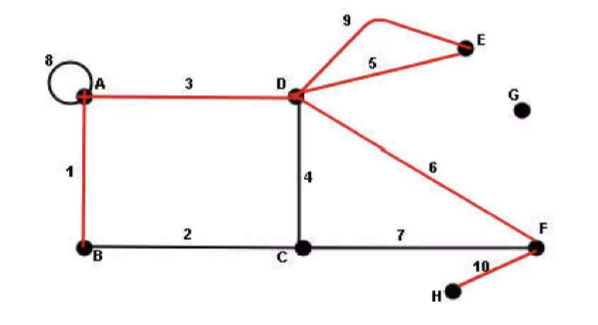DISCRETE MATH
1/42
There's no tags or description
Looks like no tags are added yet.
Name | Mastery | Learn | Test | Matching | Spaced |
|---|
No study sessions yet.
43 Terms
GRAPH THEORY
Is a branch of discrete mathematics that studies graphs, which are mathematical structures used to model pairwise relations between objects.
graph
consists of vertices (also called nodes) and edges (also called links) that connect pairs of vertices.
Leonhard Euler
Created the Graph Theory
Undirected Graph
Edges have no direction, connects two vertices symmetrically
Directed Graph
Also known as Digraph, edges gave a direction and indicated by arrows, Showing a relation from one vertex to another
Vertex
Also known as a node, is the fundamental point or unit of a graph, representing an object or entity
Edge
also known as link, a line that connects two vertices in a graph, may represent a relationship, intersection, or connection.
Weighted Edge
Edge that is associated with a numerical value
Unweighted Edge
An edge without any value
Degree of a Vertex
No. of edges incident to a vertex
In-Degree
Number of edges directed towards a vertex
Out-degree
Number of edges directed from a vertex
Path
Also known as Simple , a |_| where no vertices are repeated
Cycle
A path that starts and ends at the same vertex, forming a loop
Connected Graph
A graph where there is a path between every pair of vertices
Disconnected Graph
A graph where some vertices are not connected by any path
Subgraph
A graph from a subset of vertices and edges of another graph
Tree
A special type of graph that is connected and acyclic/no cycles
rooted tree
a tree where one vertex is designated as the foot
Complete Graph
A graph in which every pair of distinct vertices is connected by a unique edge
Bipartite Graph
A graph whose vertices can be divided into two disjoint sets such that no vertices within the same set are adjacent
Graph Isomorphism
Two graphs are isomorphic if one can be transformed into the other by renaming vertices without altering the structure of their connections
Network
Graph with weight function of numbers
Walks
also known as edge train or chain, defined as a finite alternating sequence of vertices and edges starting and ending with vertices, such that each edge is incident with the verticies preceding and following it
No edge appears more then once in a walk
Correct
No vertex may appear more than once
Incorrect, a vertex may appear more than once
Closed Walk
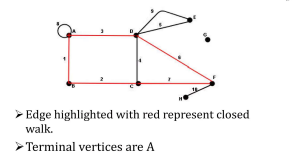
Open Walk
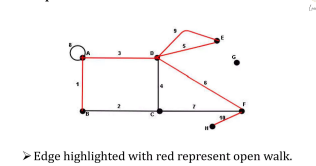
Path
An open walk in which no vertex appears more than once is called
Length of Path
The number of edges in a path is called
Self-loop
Can be included in a walk but not in a path
Circuit
A closed walk in which no vertex appears more than once except terminal vertices is called a
Path
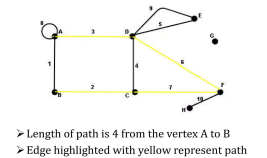
Circuit
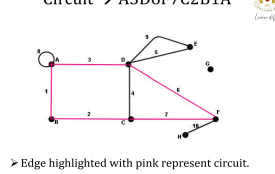
Acyclic
A graph is without cycles is
Connected
A graph is called |-| if for any couple vertices A and B there exists a path connecting A and B
Simple Graph
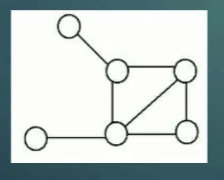
Directed Graph
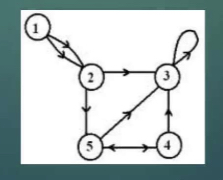
Undirected Graph
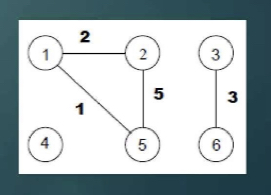
Weighted Graph
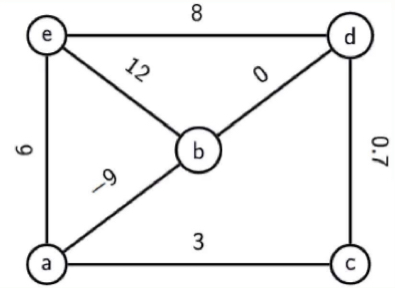
Closed Walk
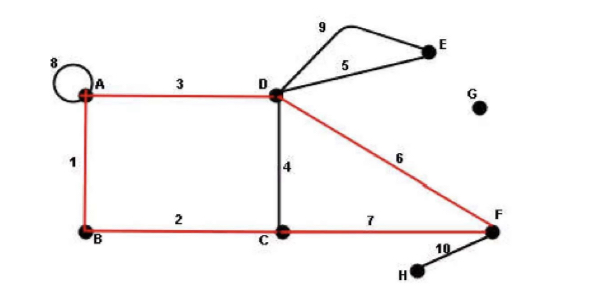
Open Walk
